Home | châteaux du canton | châteaux suisses| entrée du château |
©Les châteaux suisses. Die Schweizer Schlösser. The Swiss Castles
The visit starts in the front hall. Neckers’ marble statue seems to accommodate the visitor. The Minister of Finance is draped in a toga from the antique. The statue was made in 1817 by the German Sculptor Tieck at the request of his daughter, Mme de Staël.
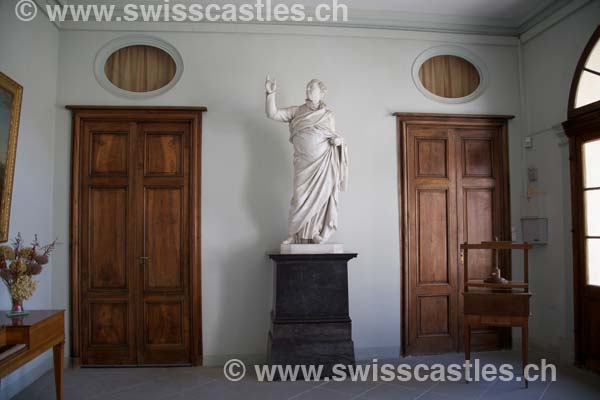
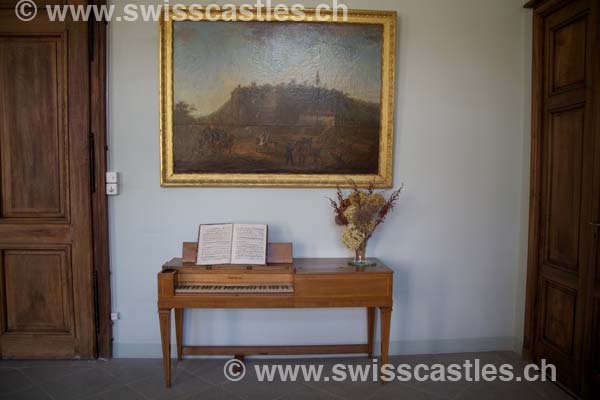
Behind you is an XVIIIth century English clock that also indicates the day and still works perfectly well.
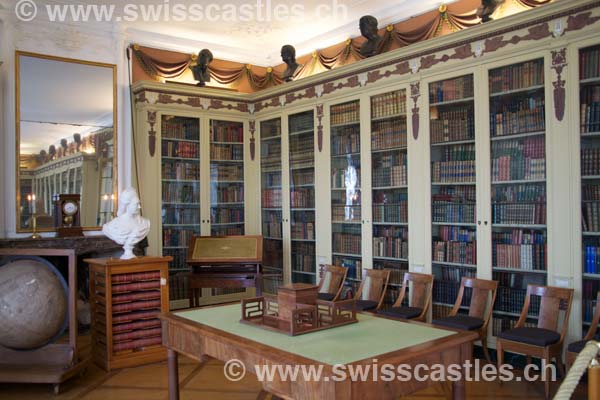

Originally, this room was a gallery where Mme de Staël used to entertain a numerous and prestigious public with theatrical performances. In 1818 the gallery was transformed into a library by Mme de Staëls oldest son, the Baron Auguste de Staël. Following the fashion of the early XIXth century, the library shelves are decorated in the “Retour d’Egypt” style. The shelves are topped with busts of famous men: Vergilius, Homer, Plato, Socrates and also Diderot.
The books of Necker and Mme de Stäel were left to August’s brother in law, the Duke of Broglie and left Coppet in 1830. They are since part of the Library at the Château de Broglie in the Normandie.
The books that you see today belong to the Count Othenin d’ Haussonville and his son, both members of the French Academy.
On a table in the centre of this room is a small mahogany deed-box which contained the “pièces justificatives du compte rendu au roi” (the justifying documents for the report to the King) written by Necker in 1781 and probably published without his authorisation. This report became quickly a "best-seller", because it exposed the fabulous allowances granted to the royal family and the court nobility. It was maybe one of the factors that led to the French Revolution. The king was extremely irritated and Necker had to resign from his ministerial position and give up on the economic reforms he had proposed. The content of this chest does in a way justify a Guides words : This is the cause of the French Revolution”.
Behind the piano you can see a bust of Mme de Staël by Tieck. On the piano sits a Sepia drawing by Isabey portraying .Mme de Staël. She is also represented as Corinne in front of the Temple of Tivoli on a painting by Firmin Massot. Corinne is the title and heroin of her famous novel.
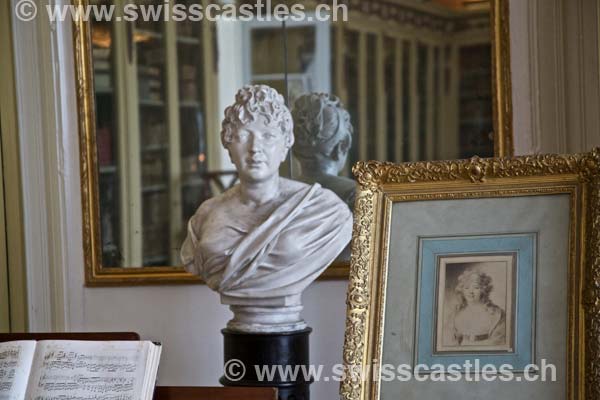
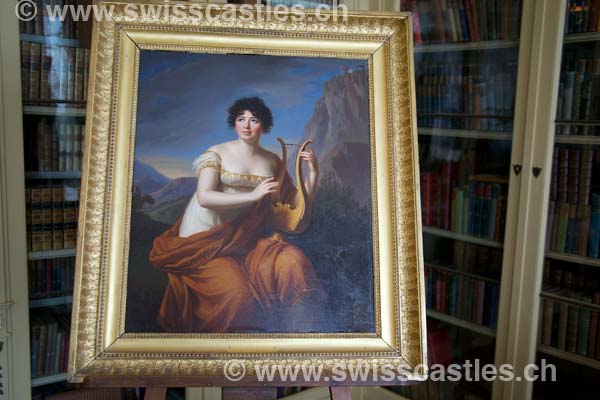
Home | châteaux du canton | châteaux suisses| entrée du château |
©Les châteaux suisses. Die Schweizer Schlösser. The Swiss Castles